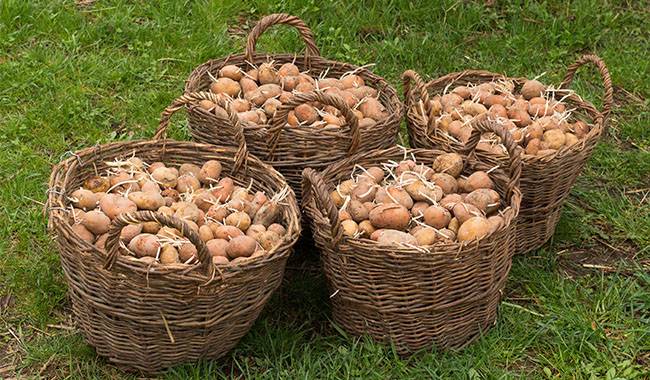
Everyone is well aware that a good potato crop can only be obtained by selecting and storing good quality tubers grown under the right conditions. Of course, it is always possible to buy potato seeds at some farm engaged in receiving and selling them, but this is quite expensive, so gardeners often solve this problem themselves.
Therefore, let us give every reader maximum detail on potato seed selection techniques, storage preparation, storage them long term, and how to save seed potatoes.
In fact, to preserve potato seeds unchanged in quality before planting, it is necessary to follow very simple rules. Harvest potatoes from the field at the right time, select the largest and well-developed tubers, and set them aside beforehand, without mixing them with other tubers, and organize them for storage in the right way, i.e. with the right temperature and humidity to preserve potato seed tubers.
In fact, to preserve potato seeds unchanged in quality before planting, it is necessary to follow very simple rules. Harvest potatoes from the field at the right time, select the largest and well-developed tubers, and set them aside beforehand, without mixing them with other tubers, and organize them for storage in the right way, i.e. with the right temperature and humidity to preserve potato seed tubers.
HOW TO CHOOSE THE RIGHT POTATO SEEDS?
For some unknown reason, some gardeners think it is necessary to pick the tuber seeds out of the whole potato in spring rather than in autumn, before planting, i.e. before germination. However, you and other experts in the field strongly recommend not to start selecting tuber seeds at the time of digging, but far in advance – paying attention to the plant itself, the intensity, and degree of its flowering.
It is not at all difficult to walk around a plot of land, select the strongest, busiest, and best-developed potato plants, and mark them with ribbons or stakes next to them. Why do you need to do this? Well, because the tops are strong, the tubers will be large and the plants will be resistant to pests and diseases, i.e. have solid immunity.
DIGGING UP POTATO TUBERS
When digging up tubers intended for use as seed potatoes, it is necessary to handle the skin as carefully as possible, as it can be easily damaged. To ensure that the skin is as rough as possible and is more or less damaged during digging, the traction of such shrubs should be trimmed with shears at a height of 5-6inch (12-15 cm) a few weeks before digging.
When harvesting such shrubs, use only an ordinary five-tined fork: this will minimize the risk of damaging the tubers. Immediately after digging, you should carefully check for damage, decay, etc. Then, if everything is in order, the dried tubers will be fed directly into the seed bag.
RULES FOR SELECTING SEED POTATOES
Potato tubers harvested from at least 7, or better still 8 or more, potatoes are usually selected as pre-seeded potatoes. At least four potatoes must weigh more than 100 g (after a long winter storage period, a reduction to 80-90 g is allowed, but not more). If there are rather small tubers under bushes that may be actively developing, it is better to let them be processed, as the degradation of the variety is obvious (alas, it happens).
For seeds, it is not recommended to put large healthy potatoes in the same hole with rotten tubers, because later the infection may spread.
Those potatoes that are completely free of defects should be placed directly in the sun for a few hours, turned over on the other side after an hour, and then brought under the shed to keep for 4-5 hours to dry completely.
PREPARING SEED POTATOES FOR STORAGE
When potato seeds are carefully dug up and handled with the utmost care, it is important to wait for a healing period before storing them so that the small wounds on the tubers can heal, close, and “heal”. This period should be quite long, up to 14 days, during which time the potato seeds must be stored in a shed with light but without any moisture. The room (shed) where the potato seed is stored during the treatment should be dry and maintained at a temperature of 66-68°F (19-20°C) above zero.
The layers of potato seed should not exceed 4inch (10 cm), and only in some cases, where there are a lot of potatoes, the layers can be doubled. Once a day, the potatoes should be gently turned with gloved hands, preferably turning green on all sides. Potato seeds should not be eaten because they contain a large amount of poison – lycopene. Of course, to be poisoned, one needs to eat a lot of such potatoes, but illness and stomach discomfort may occur. The positive side of potatoes treated in this way is that they are more immune, last longer, and are rarely destroyed by rodents.
Once the treatment period is over, the potato seeds will be re-examined to determine if the damage has healed, if at all, and finally, the spoiled tubers will simply be disposed of.
To enhance immunity, ensure storage time and improve the germination of tuber seeds, they can be treated with any fungicidal preparation. For example, gardeners rate the preparation of Maxim highly, and if you don’t want to involve chemistry (and maybe that’s the right thing to do), then treat potatoes with 0.02% copper sulfate. The solution is very simple to prepare: just dissolve two grams of copper sulfate in a bucket of water.
Treat with a sprayer so that both sides of the potato surface are wetted, which is why it is difficult to write down the exact application rate of the working solution: let’s say one bucket for 4-5 m2 (here, the thickness of the layer depends on the weight of the potato, etc.). After treatment with fungicide or copper sulfate, potato seeds must be dried on both sides immediately before storage.
STORING POTATO SEEDS
As is often done, potato seeds can be stored in cellars, lanais (balconies), or, if no cellar or building space is available, directly outside.
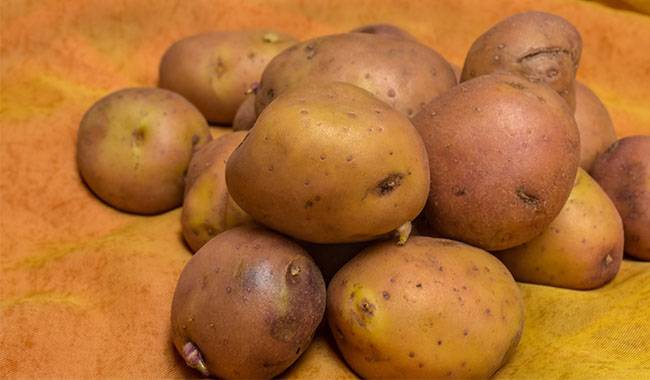
PREPARING THE CELLAR FOR POTATO SEED STORAGE
The cellar should first be disinfected to remove all pests that can attack such valuable potatoes, and then remove all mold spores. As a rule, the cellar should be in perfect condition about 25-30 days before you put in the seed potatoes.
Much depends on the material of the cellar itself. For example, if the cellar walls are made of brick, they (and the ceiling) should be painted white with a lime solution (to prepare the solution, you need about 6.6lb (3 kg) of lime diluted in a bucket of water with 25-30 g of copper sulfate). After painting the cellar must be dry, for this purpose, it is necessary to open the vents, as well as the door – in general, it is necessary to create a vent, otherwise, the cellar will have quite a long time to dry.
If the cellar is made of wood, and in another case, if it is made of brick but has wooden parts (shelves, racks, etc.), it must be treated with a gun with a dark solution of manganese, copper sulfate (sulfate can be as much as 100 grams per liter of water). Gardeners are advised to use a tobacco decoction (prepared by adding only 50-60 grams of tobacco powder or top-quality tobacco to a liter of water). This composition should then be allowed to infuse for a day, treating all wooden boxes, shelves, crates, etc. with a paint roller on top and underneath.
If there are shelves in the cellar, they can be taken apart and brought to the ground, preferably in the open air for disinfection, while checking what state they are in. If they have begun to rot badly, it is best to replace the wooden shelves with new ones of appropriate size. But even new ones should be disinfected.
Take a special attitude to the soil layer in the cellar – we recommend always fill it with lime powder, not more than 0.4inch (cm) thick.
Pay attention to the walls: when you find mold, the best option is to burn it mercilessly with a blowtorch. Check every crack where they can penetrate and lurk rodents, all cracks to avoid unpleasant consequences should be sealed with cement and added to broken glass, preferably not windows, and bottled. All vents must be sealed with fresh metal mesh, preferably not fastened to wires, but firmly welded together to prevent rodents from entering through them.
In some cases, fumigation may be a good idea. The best option is to fumigate sulfur checkers, of which there are many varieties, and the instructions on the package are available, depending on the volume of your wine cellar.
In addition to fumigation with sulfur barrels, you can also disinfect the room and the lime: first, you must tightly close all the vents, then pour quicklime in several buckets of water, preferably not in powder form, but in block form, at about 10lb per 10 cubic meters of room. Then you should carefully and slowly pour the lime with water, put on rubber gloves, respirator, and goggles, and leave the cellar as soon as possible, closing the door tightly. The cellar should remain in this state for a few days, then you can open the ventilation and the door and leave it for two days, after which you can enter the cellar wearing a respirator, assess the situation, and remove the respirator.
STORING POTATO SEEDS IN THE CELLAR
To properly store potato seeds in the cellar, it is absolutely necessary to keep the temperature in the cellar in a stable range between 35-39°F (2-4°C) during the day and night. If the temperature starts to drop, the starch contained in the potato seed tubers will very quickly start to change to sugar (the tubers will become sweet), and if the temperature drops below 32°F (0°C), the potatoes will be fatally frozen. If the temperature sometimes rises only 32-41°F (0-5°C), the potatoes will start growing significantly earlier and the shoots will break off at planting or in the warehouse itself. As a result, they will be replaced for a long time by the sweat of dormant buds.
Requirements in the cellar and ventilation system: With her handling skills, it is possible to delicately regulate the temperature of the room, in addition, in general, without ventilation, there is a risk of so-called suffocation of the planting material and its thinness.
Next is the humidity, which has a lower limit of 70%, if it is lower, the tubers will begin to dry and wilt, actively evaporating water. The humidity level can be increased by bringing snow and buckets filled with water into the warehouse, turning on the ventilation on snowy days, and keeping it at 80-85%.
STORAGE CONTAINERS FOR POTATO SEEDS
It is generally better and more convenient to store potato seeds in boxes with lattice sides and identical bases. This allows air to circulate freely. Boxes should not be close to each other – the distance should be 5-6inch (13-15 cm), but in a small room, they can be moved closer.
TIPS FOR STORING POTATO SEEDS IN THE CELLAR
If you are concerned about premature sprouting, you should not store potato seeds in layers larger than 12inch (30 cm).
Once or twice during the winter, try to take time to check all potato seeds, and if you see potatoes with shoots in the form of threads or nodules, throw them away.
If you see shoots that appear prematurely, don’t break them off; you can cut them off with scissors or pruning shears. Why? Each shoot has three buds, and if we roughly break the first one, just pull them out of their sockets and kill the two alternate shoots. Obviously, pruning the first bud will cut the yield by a third and twice as much by half, which means it has no benefit.
If you want to slow down the development of the sprouts that appear early, then buy regular dried mint at the drugstore and put a small handful of sprouts in each box. Some people even fill the boxes entirely with dried mint, but I spent one such experiment – it made no difference.
We can’t protect potato seeds from all pathogens. If they do appear, you need to add dried mugwort to the box – 100g per box, you can also use dried leaves of gout or mountain ash. You need about 11lb (5kg) of “herbs” per half-ton of potatoes.
SAVING POTATO SEEDS WITHOUT A CELLAR
Let’s divide this category into two parts – those who store potato seeds directly at home and those who store them on the soil of their garden plots.
STORING POTATO SEEDS AT HOME
You cannot store large quantities of potatoes here, usually, as many boxes as a heated balcony can hold, where the temperature can be regulated, as we wrote above, to 35-39°F (2-4°C) and humidity to about 80%.
STORING POTATO SEEDS ON PLOTS
First, you need to choose the highest place on the plot, where groundwater is sure not to reach. Then you need to dig a hole 13-16inch (35-40 cm) deep, which must have sloping sides. The wall should then be covered with an insulating material. It can be bushes, straw, poles, slabs, throw more hay at the bottom, or better yet, branches of coniferous trees.
Then pour in the trench potato tuber seeds prepared by the technique described in detail above. Straw 16inch (40 cm) thick is laid on top of them, and then a shawl-like thing is made of poles and branches over the trench. Ideally, the volume of such a hut (shelter) should be equal to about one-third of the volume of the trench in which the potatoes lie, which is necessary for the full value of the tubers to breathe.
The resulting wooden frame should necessarily be covered with a layer of straw 8inch (20 cm) thick, then poured with 6inch (15 cm) of loose soil and thrown on top of the haystack. In such a hut the two ends will certainly be formed and should be closed as tightly as possible with straw, covered with loose soil, and compacted with a shovel.
The advantage of this method of storage is that the ubiquitous potato seeds do not need to be carried, the disadvantage is that coming to the cottage you can see rotten tubers, or partially rotten, or … Not at all in the field.
That’s all we wanted to tell you in this material, so if you have any questions, please ask.
More related information about growing potato plants




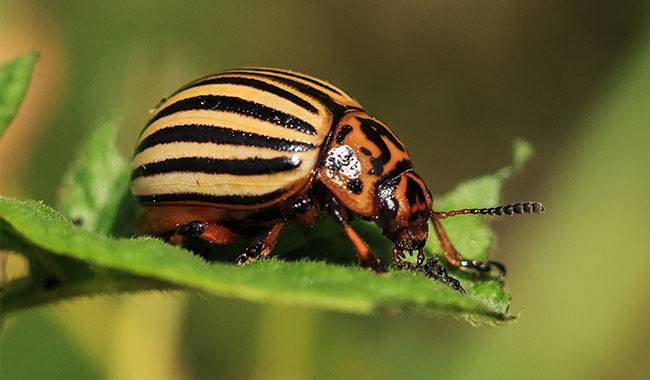
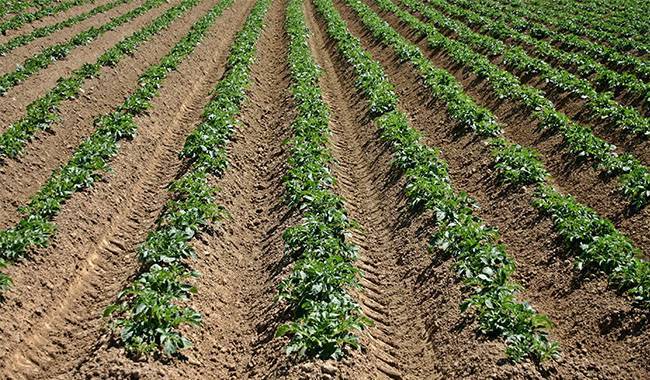
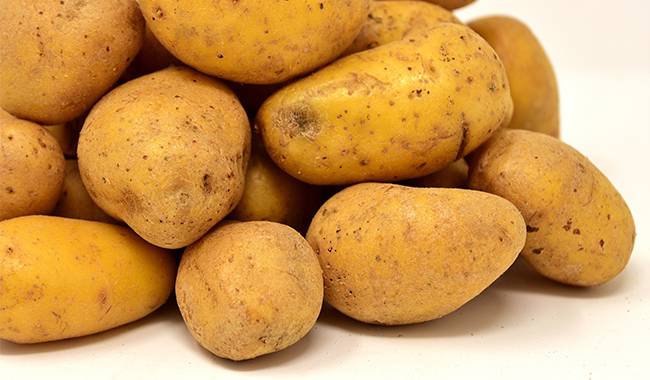
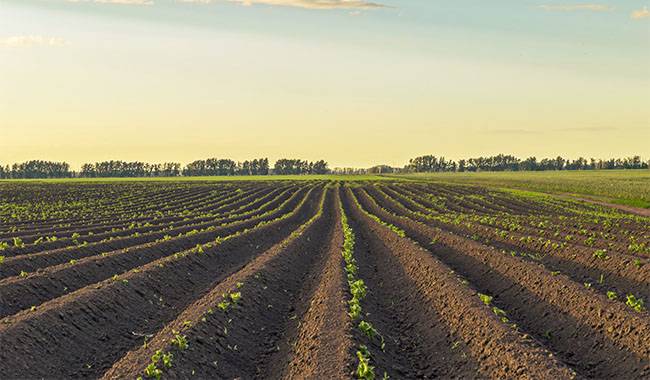
A very informative and helpful article. The English is rather stilted with a few archaic expressions and awkward descriptions. Still, I learned some great ideas for preserving my seed potatoes.
Thank you for your precious advice. Your opinion is the motivation to let us more progress.